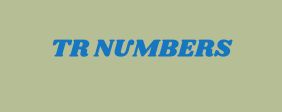Inbound sales is a sales methodology that applies the principles of inbound marketing to the sales process, focusing on the user’s needs and seeking to attract them to the brand instead of bombarding them with messages.
Inbound sales versus outbound sales
If we compare the traditional sales process (outbound) with inbound sales, we see that they present a series of fundamental differences :
- The inbound is a technique focused on the consumer , while the outbound focuses on the product and its features.
- In the inbound, we seek to establish a two-way communication between the client and the brand , but in the outbound the messages are issu in only one direction.
- With inbound sales, customers reach the product naturally , while in outbound you have to go out and find them.
- And finally, the inbound methodology always seeks the personalization of the contents, while in outbound it is decid to adopt a standard approach.
The new philosophy of inbound sales also leads us to rethink the role of salespeople, since they are a key part of the sales process.
The traditional salesperson doesn’t care about which phase Dubai Email List of the customer journey their contacts are in, researches leads only superficially, has generic and low-qualifi leads, and sends the same pitch and offers to all of their contacts. This is a “one size fits all” approach, where quantity is sought over quality.
Instead, the inbound marketer starts by prioritizing their actions based on which users are active in the consumer journey. In turn, he participates in online conversations to gain public trust. His approach is much more qualitative, as he generates inform leads with personalized content and adjusts the presentations to each potential client and his needs.
The phases of inbound sales
Inbound marketers focus on the pain TR Numbers points in the prospects’ experience and tailor their sales process to the journey the consumer has travel. Within this path, we can distinguish four stages: identify, connect, explore and guide.

